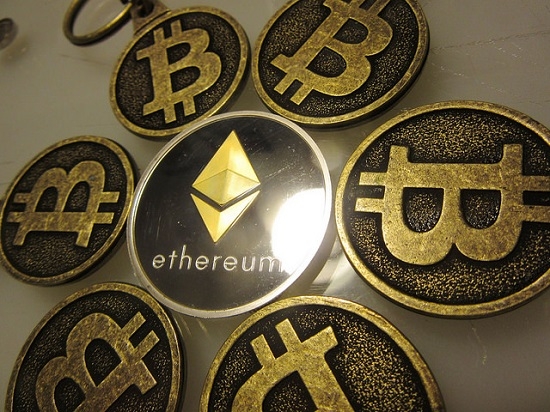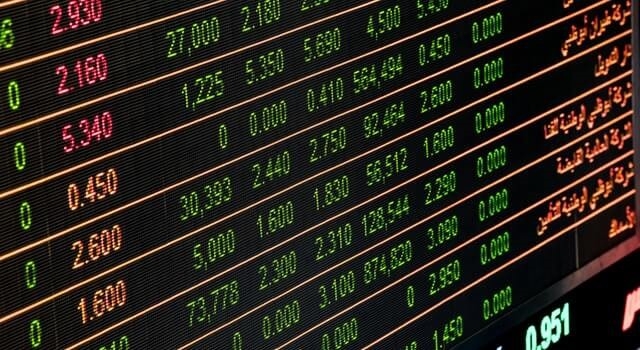Timing Gold And Silver Investing
Is the time right for gold and silver investing? It’s true that, at first glance, when looking at the historical price charts for gold and silver, they can look like a bit of a roller coaster. This might lead you to believe that gold will never reach the dizzying heights it once did.
The price of gold reached its highest point in 2012, when it soared to a record high of £1,200 per ounce. The picture for silver investing is similar with current prices much lower than at its peak. This means the current levels of both metals offers great value. No-one should want to buy at or even close to the all-time high. Current prices for gold are around 20% better value than at its height, with silver an astonishing 60% cheaper.
2016 bull run
2016 saw both the gold and silver prices record around 30% gains by year end. And although it might not yet have reached the heights of 2012, gold enjoyed a continuous upwards trend, hitting a top point of £1,050 per ounce in July of that year. In Q1, The World Gold Council reported gold demand was up 21% to 1289.8 tonnes – the second strongest quarter on record. First half gold demand was up 18% – the second strongest on record – with gold investment accounting for almost half of that demand.
Silver also went from strength to strength, reaching its highest price since January 2015. The US Federal Reserve’s decision not to change interest rates, together with no indication as to when they might raise them, encouraged people towards investing in gold and silver.
More subdued gains in 2017
Precious metals enthusiasts saw more modest gains the following year. Starting the year at £935/oz gold finished the year around 2.5% up at £960. During those two points it spend 3 periods north of the £1,000 mark, peaking in September at £1,030. This coincided with a strong performance in the stock markets with the FTSE 100 rising 7.5% and the Dow Jones an incredible 24%. Generally when stock markets perform so well, gold has the least interest and its price suffers the most. So it’s encouraging in the grand scheme of a balanced portfolio that gold still returned around the inflation rate during such a period.
What can we learn from that?
This demonstrates that while gold can act as portfolio insurance during economic downturns (usually appreciating by double digits), it still can act as a store of wealth in other years too. With cash deposits still paying well below the inflation rate in 2018, this simple achievement for gold shouldn’t be sniffed at. Essentially, owning gold should be a long term strategy, as returns (and potential losses) can vary greatly from year to year. Trying to second guess the market and predict the performance is futile and relying on extreme luck at best. It’s always tempting to sell everything and only buy the investment that is performing the best at that time, in a hope to ride the gravy train. However, this strategy leaves you vulnerable to being hopelessly exposed to market corrections and change. Owning some gold along with stocks, bonds, cash and property, enables balance and more predictability.
….and silver? Has Bitcoin taken its mantle?
Silver experienced a poor year in 2017 with losses of around 3.5%. Some feel the price is being manipulated downwards by the huge banks which are looking to load up on the metal. If so, the price will inevitably bounce back with a vengeance when the banks want their holdings to increase in value. An alternative is that with stocks performing well under the new Trump administration and cryptocurrencies making millionaires seemingly overnight, silver simply hasn’t had a look in. Many have switched their attentions from bullion to bitcoin. With the silver price so low and its huge potential for quick gains, it’s certainly been viewed as the exciting and go to investment for those seeking significant price rises. With the likes of Bitcoin achieving this on a steroid level, the short term greed has switched all the attention away from silver.
Will silver regain its shine instead of Cryptocurrencies?
However, as we now know in 2018, crypto currencies are incredibly volatile, on the downside as well as the upside. For the novice investor whose head has been turned by tales of instant wealth, there are now almost as many stories of overnight bankruptcy caused by incredible price drops for bitcoin. This period (after their initial glamorous price growth) will likely sort the wheat from the chaff. Naive investors will perhaps start to reconsider the value of cryptos, deciding either that they’ve now missed the boat, or that the risk of complete loss is too great. For the more travelled investor, they already know that investing in crypto currencies is similar to betting red or black in the casino. There is simply nothing tangible behind their value, and while the blockchain technology has its merits and will no doubt perform a critical role in our futures, getting rich overnight from Bitcoin could be over.
Silver to differentiate itself from Bitcoin
For savvy investors seeking large gains, they’ll know that while silver and cryptos can be grouped together as higher risk, higher gain asset classes, they are in fact almost opposites. While the likes of Bitcoin may have no tangible or intrinsic value, silver is a physical precious metal. It’s value can never fall to zero like Bitcoin and its value is backed by something tangible that not only can be used as currency, but also has vast industrial uses especially in the technology sector. For this reason, the investors left standing after the inevitable Bitcoin massacre will no doubt seek out silver once again as the go to sexy investment.
Current silver and gold value represent a great opportunity and potential
2018 has started off in a rather dull fashion for precious metals. Prices are still around 20% below their historical peak, so it’s still a very good time to invest in both gold and silver. In fact, it just goes to underline that it’s a lucrative opportunity, with room for growth and the possibility of sharp spikes. As of March, returns for the year have been virtually flat for gold and 7% down for silver. Combined with last year’s silver price squeeze, it’s now looking like incredible value. It’s ratio to gold, which averages 47:1 over the past century, now stands at a staggering 80:1. Surely silver investing offers vast upside potential.
Crucially, the influential factors which tend to increase the demand for precious metals, are still very much in place. Global markets continue to be unstable, rumours of another banking crisis persist and a housing market slowdown has already started. Combine this with heightened terror threats and rising demand from Central Banks for gold, and it’s easy to understand why the precious metals market still has plenty of wind in its sails.
Calm before the stock market storm
Stock markets have now enjoyed nearly a decade of uninterrupted growth since the 2008 credit crisis. Recently the Dow Jones has received further boosts from the Trump administration. It’s obviously tempting to leave as much money in stocks while they’re doing well as possible. Especially while precious metals are taking a breather. However, every market analyst will agree that a simple glance at historical performance will tell us that equity market bull runs cannot and do not continue for ever. More pertinently, the most severe market crashes come after the longest a strongest bull runs, which inevitably fuel an inflating bubble. This is similar the fact that San Francisco sits plumb on the San Andreas fault line. A glance at historical earthquakes will tell us that with the constant movement of the earth’s crust, further events are not only likely but guaranteed. It’s a case of when, not if there will be another huge earthquake. Not only that, but when San Francisco is overdue a quake, just like the stock markets are now overdue a correction, then the expected magnitude of that impact is far greater.
Maybe I can simply leave all my cash in stocks and switch to gold when that happens?
The best policy is not to try and predict the future, as that’s just witchcraft! Instead, we should learn from the past and understand that just like the earth, the markets are constantly moving and predicting the moment of a big eruption is impossible. We’d suggest leaving money in stocks (even after they do fall dramatically as you won’t want to miss out on the recovery, however long that takes). However, we’d also insist on owning some physical gold and silver too. The most prudent strategy with timing when to buy precious metals is simply to buy now and wait. As long as you allocate a healthy percentage of your assets into the likes of gold, then you’ll be protected when the markets do crash. My little saying is that I’d rather own gold 6 months, or even 2 years before the market crash, than a day after. Because, then it would be too late.
What else could push gold and silver up this year and next?
It’s not only the stock market which is vulnerable. There’s plenty of other elements in the mix which are either brushed under the carpet by authorities or simply under-estimated.
Interest rates and housing market
After an extended period of record low interest rates in most of the globe’s major economies, we’re now starting to emerge into a new phase. Base rates have already risen in the UK and are predicted to continue rising in 2018 from May onwards. Rates in the US have also been rising, at a slightly faster rate. Rhetoric from central banks is that increases will be modest. However the huge danger is the impact even small increases could have on the average man in the street. In a period of incredibly low or even negative wage growth, one of the few areas that has papered over the cracks has been property. With house prices seemingly on an unstoppable journey to the stars, the property-obsessed UK public felt comfort knowing their prize asset was at least rising in value. With interest rates near to zero, borrowing has been super cheap. So most of us have re-mortgaged, unlocking vast fortunes to fuel either extravagant lifestyles, or at least pay for the bills during lean periods. This increased leverage now leaves us vulnerable to the very interest rate rises we’re seeing now. When the starting point is as low as its been (0.25%), it only takes modest base rate increases to have a huge impact on our monthly mortgage cost, especially when cushy fixed intro rate mortgages periods come to an end. Check out our investigation into the relationship between interest rates and the price of gold and silver.
…and the housing market has softened
Not only are our monthly mortgage costs increasing, but the value of our property has stopped rising, and actually started to fall. This is a consequence not only of the international market struggling, with wealthy Chinese and Russians previously fuelling UK price growth, but also over the swingeing tax increases brought in by the current government which has increased stamp duty so dramatically. We expect that firstly, more house owners will fail to pay their mortgages as interest rates rise, leading to more downward pressure on house values. For those who do manage to survive as costs increase, they will have less disposable income (with wage predictions stagnant), which will impact the high street and service sector, further crimping stock markets. Higher interest rates also mean higher new borrowing costs, which deters investment in corporate growth. All this will put even more pressure on the already unaffordable rental market. Its common to compare gold investment versus property, but both should play crucial roles in a balanced portfolio.
UK consumer credit bubble
With the pressures of interest rate and mortgage rises, the public’s other debts will also come under pressure. Two particular concerns are the car market and credit card sectors. Both industries are enjoying record high borrowing. However, as lenders feel the squeeze from higher rates and more defaults, we’re likely to see stricter borrowing requirements and higher rate deals. A record number of UK borrowers are currently on zero per cent credit card deals which are likely to begin to reduce in availability. People will then struggle to refinance their debt at anywhere near the levels they’ve been used to. In the automotive industry, a growing trend has been for leasing cars. Whether on outright monthly lease deals or borrowing with a balloon payment at the end, many drivers will struggle to continue financing their car. Certainly the hunger for new cars every 2 to 3 years will likely diminish.
The technological age is slowing crushing the high street
Early 2018 has brought with it fresh casualties of the ever-growing high street demise. Toys R Us and Maplin have both gone into administration, while seemingly popular food chains, Prezzo and Jamie’s Diners are closing a large number of restaurants. Perhaps this doesn’t come as a surprise. You could argue that Maplin has always been incongruous and never really had mass appeal. While kids love the experience of Toys R Us, adults who actually buy the games are now far more likely to order from Amazon (NASDAQ:AMZN) and benefit from lower prices and next day delivery. Either way, this trend of weeding out the weak, however large the company, is likely to continue as the public turn their back on the high street and embrace online shopping. The consequence which is frightening is the sheer loss of long term jobs. Automation is filling the role of so many which will have a long term negative impact on an already growing population.
Brexit, Trump and Russia
There isn’t enough time to cover every simmering possible global issue which could push gold and silver prices skywards. But certainly a handful of other significant issues would be the ongoing threat to the UK from Brexit. Whether this has a direct impact on our economy, a slower longer term influence or is simply negative to sterling, this is one which will stay on the radar for a while to come.
Donald Trump hasn’t blown up the world yet, but who knows about tomorrow! None of us would be shocked if he develops his trade war with China, instigates a war with the likes of North Korea, or simply makes some terrible domestic decisions in the world’s biggest economy. Either way, in today’s ultra globalized economy, foreign issues have more impact on the UK than ever.
The recent tensions between Russia and the UK after the poisoning accusations could be a storm in a teacup. However, the government’s strong condemnation of Russia suggests there could be a hidden agenda. With Putin now flexing his muscles, I’d rather own gold right now to provide diversification, just in case this escalates (especially as Russia have been stockpiling gold aggressively themselves over the past few years).
Long term view for gold and silver investing
The value of gold and silver may be volatile, but owning them as part of a portfolio actually reduces your overall personal volatility. They tend to act as a balance to the traditional paper assets (like stocks and shares), so when those markets fall, physical gold and silver have historically risen. The motivation for many gold and silver investors isn’t necessarily to time the market perfectly; instead, it’s to take a long term view to provide balance and protection to their overall wealth. This way, exact timing isn’t important, as the long-term hold should outperform any short-term price drops and still deliver portfolio insurance.
So there’s no need to worry that gold prices might appear to plateau from time to time. You should definitely consider investing in both gold and silver, which remain very worthwhile, solid, tangible investments.
Cost average to iron out volatility
If you’re still unsure and concerned about timing, then our ‘Monthly Saver’ enables you to purchase on a regular basis. You can set up to automatically buy a small quantity of gold or silver every month. This means that if the price does decrease from one month to the next, it actually benefits you, as your next purchase would be at the lower rate.
Over time, you buy each month at the various underlying prices, therefore averaging out the cost of your precious metals. It’s a great way to get started in gold and silver investing.
The main message is that it’s necessary to take the long-term view. As with any investment, prices will go up and down, but as these graphs illustrate, the rewards can be well worth it. We maintain gold and silver are still very good value and worth their weight in, well… gold and silver!



